

Step 1. Download, install, and launch FoneDog Android Data Recovery, then you will find a pop-up window. You can click "Free Trial" to try the product first.
Step 2. To enjoy all functions, click "Buy Now" to get a registration code. After purchase, you will receive an email with your registration code. Then, go back to the software, and find the "Email Address" and "Registration Code" columns under "Android Data Recovery".
Tip: You can also tap the key icon on the top side of the interface to register.

Step 3. Fill in the "Email Address" and "Registration Code" columns, and click "Register" to finish registration.
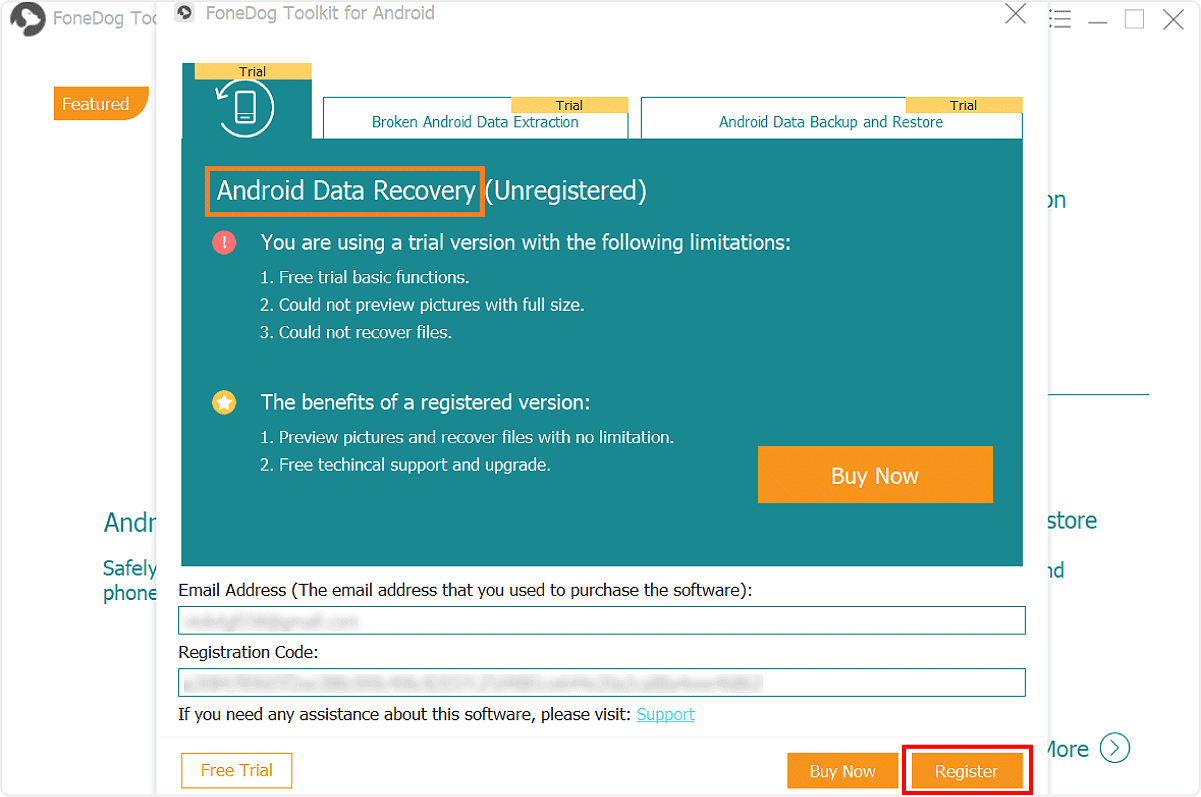
Now all functions are unlocked and you can start to recover your Android data. If the registration is rejected, you are supposed to confirm whether you have filled in the correct email address and registration code.
Step 1. Launch FoneDog and Connect Your Android Phone to Computer.
First, download FoneDog Toolkit - Android Data Recovery. Launch the software and connect your Android Device to your computer via USB cable.

Step 2. Enable USB Debugging on Android.
You need to enable USB Debugging on your Android phone. If you don't open the debugging on your phone, FoneDog Android Data Recovery will ask you to enable USB debugging on your phone.
For Android 2.3 or earlier: Enter "Settings" > Tap "Applications" > Tap "Development" > Select "USB debugging"
For Android 3.0 to 4.1: Enter "Settings" > Tap "Developer options" > Select "USB debugging"
For Android 4.2 or newer: Enter "Settings" > Tap "About Phone" > Click "Build number" for several times until getting a note "You are under developer mode" > Back to "Settings" > Tap "Developer options" > Select "USB debugging"
Never worry. USB Debugging is just a mode that allows your Android phone to connect to a computer via USB cable. After you finish the steps above, click OK on Android Data Recovery and tap OK on your device.
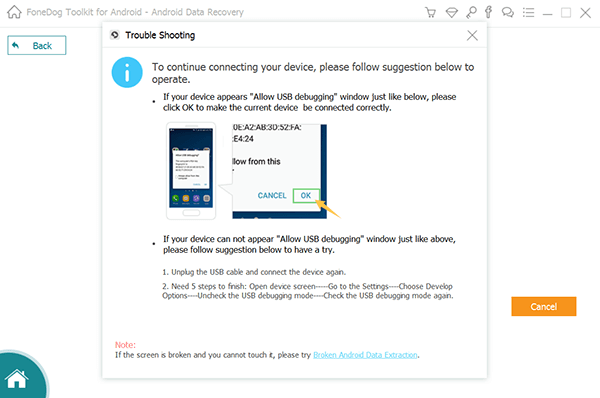
Step 3. Choose File Types to Scan on Your Android Phone.
After the Android phone being detected by the program successfully, FoneDog - Android Data Recovery will display all the data types it supports to recover.
By default, it has checked all the data types. You can just choose the type of files that you want to recover. And then click "Next" to begin scanning.
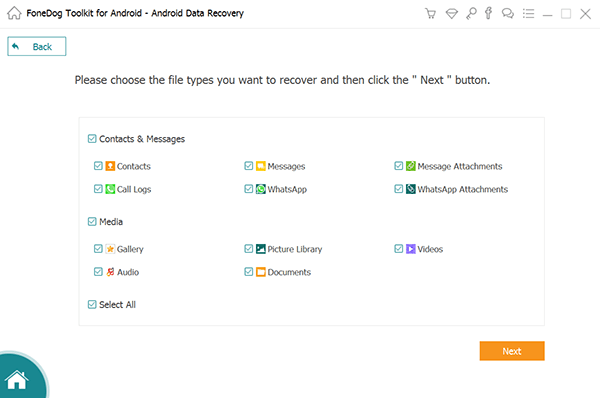
Step 4. Quick/Deep Scan Data on Your Android Device.
After you click the Scan button, the software will operate the Quick Scan by default. Later, if you could not find the deleted data you need or you just want to view more and complete data on your device, you can continue with a Deep scan. Deep Scan will find more data on your data, so it takes a longer time than Quick Scan in the data scanning.
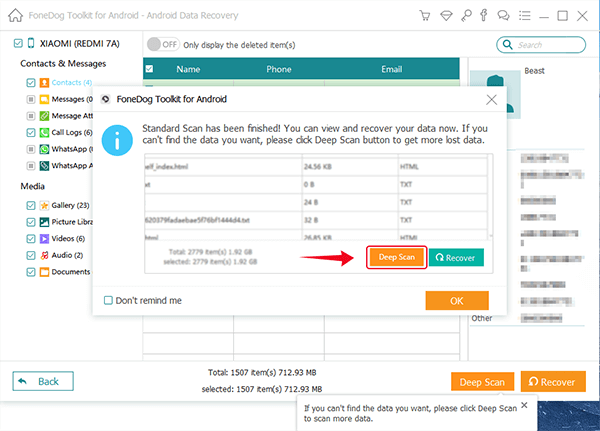
Kind Note Here:
If you want to deep scan the data on your Android device, you’d better root the device first.
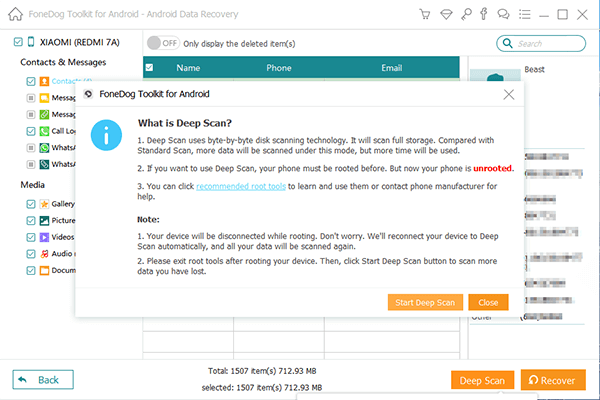
Step 5. Choose Deleted & Lost Files to Extract.
The scanning process will take you a few minutes. Precious things are always worth waiting for. When the scanning stops, the files under types you select will be listed in detail.
Now you can preview the found data one by one. You can mark down the items you want and click "Recover" to save them all on your computer.
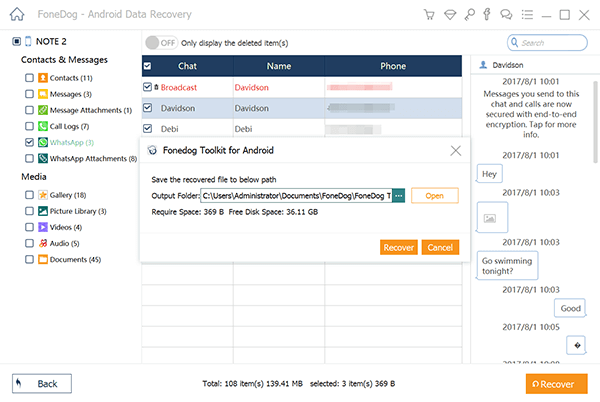
Tips: You may want to know "How long does the recovery take?", "How many days old data can be recovered on Android Device?"
Actually, the time of recovery process and the number of data depend on the phone model, phone storage and whether the deleted data is overwritten or not, etc. Just be patient. Precious things are always worth waiting for.